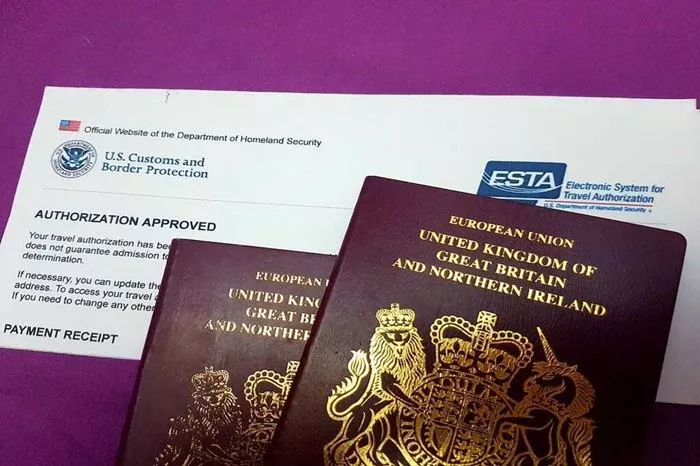Traveling to the United States is a popular destination for many international visitors, whether for tourism, business, or a quick stopover. However, travelers from certain countries need to understand the U.S. entry requirements before planning their trip. One of the most common and often confusing requirements for many travelers is whether or not they need an ESTA (Electronic System for Travel Authorization) to enter the U.S. This article provides a clear overview of when you need an ESTA, how to apply for it, and what to know about eligibility and validity.
ESTA Requirements
The Electronic System for Travel Authorization (ESTA) is required for travelers from countries that participate in the Visa Waiver Program (VWP). If you are from a VWP country and plan to visit the United States for tourism, business, or while in transit for up to 90 days, you must apply for an ESTA.
It’s important to note that ESTA is not a visa—it is an authorization that determines your eligibility to travel under the VWP. While the ESTA allows you to board a plane or ship to the U.S., it does not guarantee entry. U.S. Customs and Border Protection (CBP) officers at the port of entry will make the final decision about your eligibility to enter the country.
Eligibility Criteria
Not everyone from a VWP country is eligible for ESTA approval. To apply for ESTA, you must meet the following eligibility criteria:
Valid e-Passport: You must hold a valid e-passport from an eligible VWP country. An e-passport contains an embedded chip that meets international security standards.
No Valid U.S. Visa: You should not have a valid U.S. visa (such as a B-1 or B-2 visa). If you hold a valid U.S. visa, you do not need an ESTA. However, if you are traveling on a visa waiver, you must apply for ESTA.
Clean Travel Record: In some cases, your travel history may affect your eligibility. For instance, if you have visited certain countries like Iran, North Korea, or Syria after specific dates, you may be ineligible for ESTA and might need to apply for a visa.
Purpose of Visit: You must be traveling for tourism, business, or transit and your stay should not exceed 90 days.
Before applying for an ESTA, it’s important to ensure that you meet all these criteria, as certain exceptions or restrictions may apply based on your travel history.
Application Process
Applying for an ESTA is a relatively straightforward process, but it should be done well in advance of your travel. Here’s how you can apply:
Access the ESTA Website: Visit the official U.S. government ESTA website to begin the application process. Be cautious of third-party websites that charge additional fees.
Enter Personal Information: You will be asked to provide your passport details, including your passport number and expiration date, as well as basic personal information such as your name, date of birth, and address.
Travel Information: You will need to input details of your planned trip, including your intended arrival date in the U.S. and the address where you will stay (if applicable).
Answer Security Questions: The application includes several security-related questions about your criminal history, past immigration violations, and your health. Be truthful when answering these questions, as providing false information can lead to your ESTA being denied.
Pay the Fee: The application fee for ESTA is typically a small fee (around $14 as of 2023). Payment can be made by credit or debit card.
Submit and Wait for Approval: After submitting your application, you will typically receive a response within minutes. Most applications are approved right away, but it’s recommended to apply at least 72 hours before your flight, just in case there are any issues.
Validity and Usage
Once your ESTA is approved, it is generally valid for two years or until your passport expires, whichever comes first. During this time, you can use the ESTA to make multiple trips to the U.S., as long as each stay is under 90 days and for purposes allowed under the VWP (tourism, business, or transit).
If your personal information, such as your address, name, or travel plans, changes after receiving approval, you will need to update your ESTA. Changes can be made online through the ESTA portal. If there are significant changes to your circumstances, like a change in passport or travel purpose, you may need to reapply for a new ESTA.
Travel Without ESTA
If you do not meet the eligibility requirements for an ESTA (for example, if you are not from a VWP country, or you have a valid U.S. visa), you do not need ESTA. In such cases, you may need to apply for a traditional U.S. visa, depending on your nationality and the purpose of your visit. It’s important to check the U.S. Department of State website or consult the U.S. embassy in your country for the most up-to-date visa requirements.
Conclusion
In summary, whether you need an ESTA to travel to the U.S. depends on your citizenship and the purpose of your visit. If you are from a Visa Waiver Program country and plan to stay in the U.S. for 90 days or less for tourism, business, or transit, applying for ESTA is mandatory. However, it is not a visa, and entry into the U.S. is still at the discretion of Customs and Border Protection officers. To ensure a smooth travel experience, apply for your ESTA well in advance and make sure you meet all the eligibility criteria before submitting your application.
Related topics:
- Can Israeli Citizens Travel to the UK?
- Can India’s New Tourism Initiatives Bridge the Gap in Inbound Travel?
- Can I Take a Train from London to Italy

